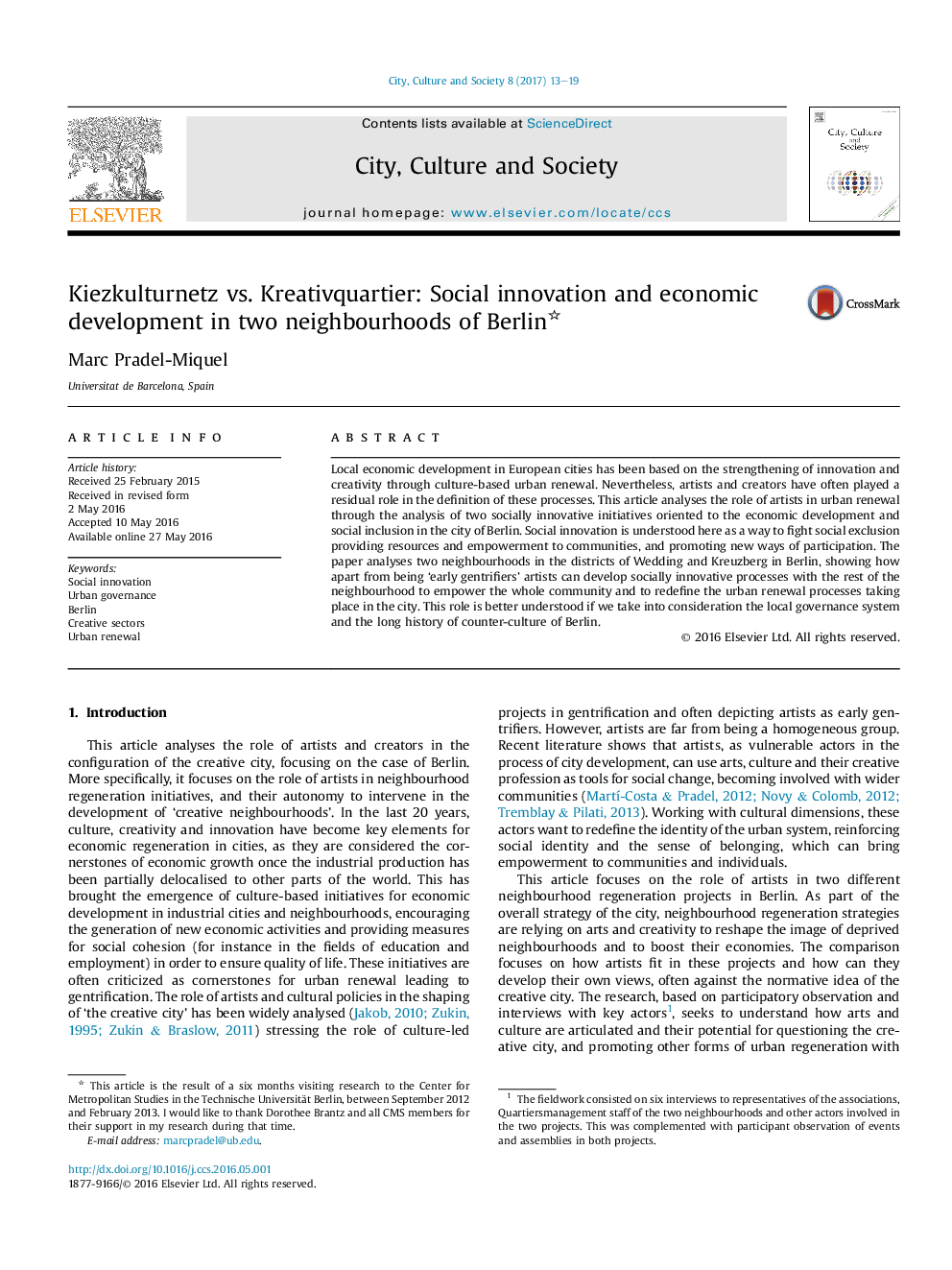| Article ID | Journal | Published Year | Pages | File Type |
|---|---|---|---|---|
| 5048264 | City, Culture and Society | 2017 | 7 Pages |
â¢European cities tend to promote culture-based urban renewal leading to increasing spatial segregation and gentrification.â¢Beyond being early gentrifiers, artists and creators are often involved in neighbourhood strategies against gentrification.â¢In Berlin, creativity is seen as a way to change deprived neighbourhoods' image and identity, giving a role to artists.â¢But artists often get institutionalised in communities and promote alternative approaches for their neighbourhood.â¢Artists can play a role in the empowerment of communities or to be the instruments for processes of neighbourhood upgrading.
Local economic development in European cities has been based on the strengthening of innovation and creativity through culture-based urban renewal. Nevertheless, artists and creators have often played a residual role in the definition of these processes. This article analyses the role of artists in urban renewal through the analysis of two socially innovative initiatives oriented to the economic development and social inclusion in the city of Berlin. Social innovation is understood here as a way to fight social exclusion providing resources and empowerment to communities, and promoting new ways of participation. The paper analyses two neighbourhoods in the districts of Wedding and Kreuzberg in Berlin, showing how apart from being 'early gentrifiers' artists can develop socially innovative processes with the rest of the neighbourhood to empower the whole community and to redefine the urban renewal processes taking place in the city. This role is better understood if we take into consideration the local governance system and the long history of counter-culture of Berlin.
